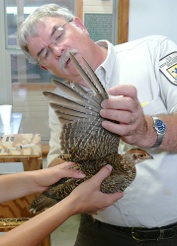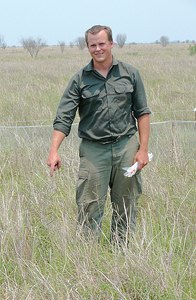STCP Attwater’s Prairie-Chicken













A controlled burn to maintain healthy grasslands at the Attwater Prairie Chicken National Wildlife Refuge in Texas

Mike Morrow of the USFWS examines a captive-produced Attwater’s prairie-chicken prior to release.
STCP Research Fellow Aaron Pratt points out an Attwater’s prairie- chicken nest in the midst of a protective wire enclosure.










